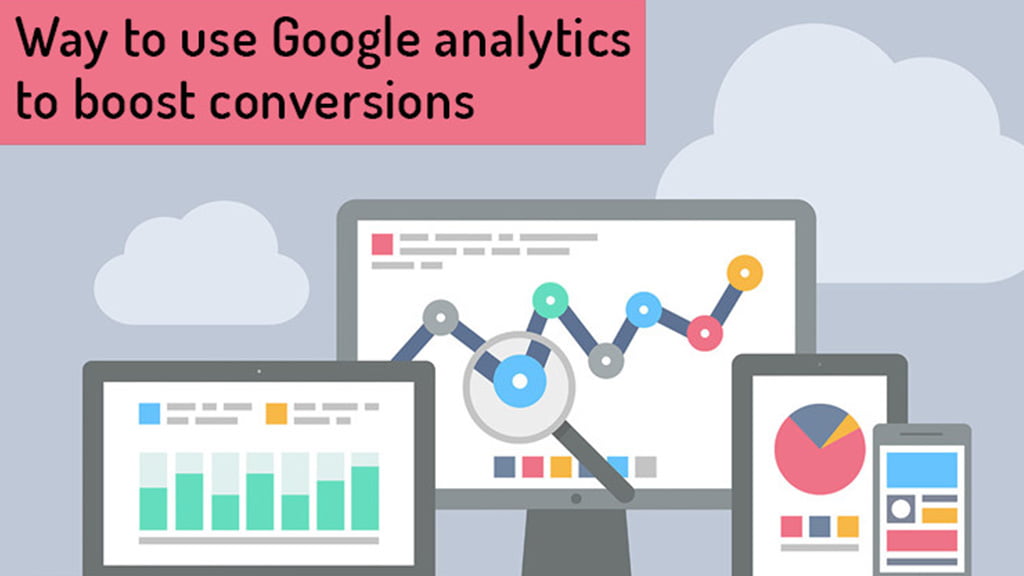Are you getting the most out of your Data and Metrics? Find out how to Leverage It.
All websites are created for a reason. Whether you’re looking to make your customers aware of your brand, sell your products to them online, or get them to reach out to you, a website is the first point of contact for your business in the digital world.
Now, how do you determine whether your website is achieving your goals? The simple answer – metrics and conversion rates.
Ok, what’s that?
The conversion rate determines the effectiveness of your website. It states whether your site achieves the goal it was created for. All elements of your website design and development should be tuned to boosting your conversion rate.
However, that’s easier said than done. Tracking and optimizing conversion rates are like navigating through the dark season on a stormy night. You know where you want to go, but it’s still difficult to ensure that you are on the right path to your destination.
Luckily, you’ve got some impressive tools to help you out – Enter Google Analytics. It serves as a compass that helps you navigate your way safely through the dark, stormy seas of online marketing. And, the best part it’s free.
Yes, you read that right. Google Analytics is free and is available for all to use. The sad part – not many are aware of how to use it the right way. Here, in today’s post, we give you some of the top ways to make the best use of Google Analytics and reach your conversion goals.
WAYS TO LEVERAGE GOOGLE ANALYTICS TO REACH YOUR CONVERSION TARGETS
Keep an eye on the Bounce Rates
One of the most critical elements of your analytics data is the bounce rate. If you find that a large number of people are leaving your site after just viewing the home page, then you know that there is a problem. You need to work on optimizing the page design by adding more engaging content, eye-catching videos that pull in the attention of your page visitors, call-to-actions that encourage visitors to engage with you, and more.
Identify and Target New Markets
By looking at the geographical location of your site visitors, you can identify and analyze the potentials of new markets. Say, for instance, you right now focus on selling your products only in a few north-Indian states. But, you have repeat site visitors from the Southern states. Then, it indicates that you should expand your market reach to cater to these new markets, by introducing special offers, discounts and more.
Figure out What Works and What Doesn’t
A look at the pages that have generated traffic, conversions, and results is an excellent way to figure out what content resonates with your audience and what doesn’t. For instance, if a blog post was shared and liked several times, then you know that your audience liked it and you can provide them with other similar content.
Find out what resonates and connects with your audience and create more of that.
Attribution Plays a Crucial Role
By using the attribution data points available in the “model comparison tools”, you get a better insight into which marketing channels work and what don’t aid in the conversion. The default attribution setting is “last interaction”. But, you can change it to “First Interaction”, to figure out how each channel helps in boosting conversion rates.
Analyze Behaviour Flow
Google Analytics is indeed a life-saving tool for digital marketers. It doesn’t just provide you with the basic metrics like traffic volumes, click-rate KPIs, etc. instead when used the right way it can help you figure out visitor intent, which is highly valuable.
By extrapolating the visitor intent using the “behavior flow” tool in the Google Analytics dashboard, you can convert your raw statistics and numbers to provide visual charts that help you in deciphering the intent of your web visitors.
You can find out which pages they interacted with, the points that they became disengaged and moved away from your site, and so on.
All this information can be further used to refine and optimize your site design.
Identify the Sources of Your Website Traffic
Knowing where your visitors are coming from is absolutely crucial. You need to know whether they landed on your site as a result of organic search results or were driven from paid ads. Finding this difference can help you identify the right modes of online marketing to take in the future.
It also shows you the effectiveness of various digital marketing methods you have employed. Say, if your organic rankings are working well, then you can be assured that your blog posts are on the right track. On the other hand, if you don’t have sufficient traffic from social media sites, then it means that you have to work more on your social media strategy.
Analyze the Flow of Users
one of the most underrated features in Google Analytics is the “User Flow” metrics available under “Behaviour Flow.” Understanding and analyzing the behavior of your customers and the way they interact on your site is essential to fully understand, what appeals to them and what doesn’t.
Unless you figure out the likes and dislikes of your target audience, you cannot make the right changes.
Make the Best of Attention-Grabbing Pages
The length of time your visitors spend on a particular page is a vital piece of data. Once, you have figured it out, you have to leverage it to boost conversions and improve sales. When you know that a particular section of your site captures the attraction of your users for the most time, then it means that you’ve got it right.
Placing a relevant call-to-action or offering a discount or coupon code at this point is likely to boost your conversion rates and lead to sales.
Mobile Vs. Desktop – You need to Cater to All
Using Google Analytics data, you can easily figure out whether your web traffic is coming from mobile devices or desktops. Today, more and more people are using mobile devices for internet browsing and online shopping.
If you haven’t optimized your website to provide an optimal experience to mobile users, then you have to fix it right away. Better still, opt for responsive website design so that your users get the best experience, irrespective of the device they’re on.
Keep an eye on mobile bounce rates. If your website has less than optimal loading speeds and responsiveness, then you are bound to lose out on a large chunk of your mobile visitors.
Look out for Cross-Channel Attribution
Looking at aggregated data will give you a much better idea about which marketing channels are influencing customer conversions. Mostly, people use last-click as the preferred model. However, with Google Analytics, especially the version Analytics360, you can get a closer view of the different channels.
With this data, you can make smart decisions and decide on the best ways to capture and close sales.
Focus on Customer Visits from Keywords
Using Google Analytics, you can easily find out the keywords that people are using to reach your website. What are the keywords that people used to land on your site? And, most importantly are these the keywords you want to be ranked for?
Say, if you specialize in yoga apparel but people you search for yoga equipment are landing on your site, then it means that there’s some mismatch and you need to alter the content of your webpage to improve keyword relevancy.
Additionally, Google Analytics also shows you which keywords you want to rank for but aren’t ranking.
Make use of Google Search Console
The biggest organic search traffic data is tied up in the Google Search Console. However, not many website owners integrate Google Search console data with the data from Google Analytics. Once you do this, it opens a treasure mine of metrics and analytics that can help you know more about your site.
Finally, Don’t Just Focus all your Efforts on one Metric
When doing so, you end up missing the big picture. Or worse still, you end up arriving at the wrong conclusions based on one data element, without putting it into context with others. So, make sure to use all the components of Google Analytics to arrive at the right decisions and boost your conversion rates.
Boosting conversion rates is like going to the gym. The first few days are the hardest. But, once you get into the groove, the long-term impacts are indeed tremendous.
Are you ready to get started today?
For the best analytics support for your website and to redesign or optimize your webpages, get in touch with our expert Metrics and Analytics team here at Webfries.


